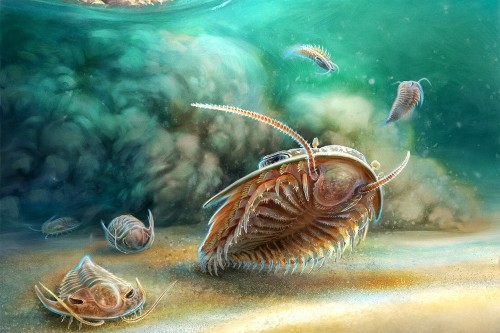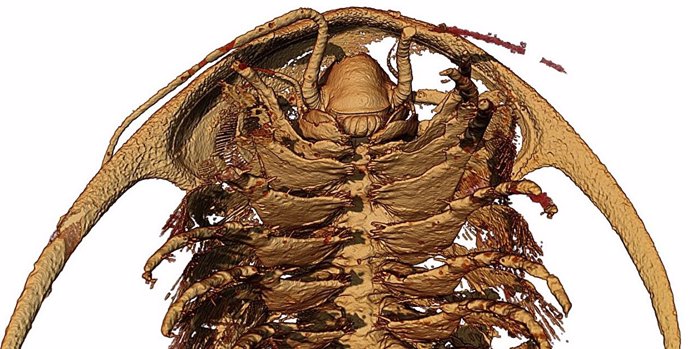Microtomographic reconstruction of the head and forelimbs of the trunk (“body”) of the trilobite Protolenus (Hupeolenus) in ventral view – ARNAUD MAZURIER, IC2MP, UNIV. POITIERS
June 28 () –
Three-dimensional trilobite fossils, remarkably well preserved in ash and more than 500 million years old, have been collected in the High Atlas of Morocco.
These creatures from the Cambrian period have been called by scientists as the ‘Pompeii trilobites’ due to the similarity of their preservation with that of the victims of the historic eruption of Vesuvius.
“I have been studying trilobites for almost 40 years, but I have never felt like I was seeing live animals as much as I have with these. “I’ve seen a lot of soft anatomy of trilobites, but it’s the 3D preservation here that’s really amazing,” he said. it’s a statement Dr. Greg Edgecombe, a paleontologist at the Natural History Museum.
“An unexpected result of our work is discovering that volcanic ash in shallow marine environments could be a gold mine for exceptional fossil preservation.”
Because their hard, calcified exoskeleton is often well preserved in the fossil record, Trilobites are some of the best studied fossil marine animals. More than 20,000 species have been described by paleontologists in the last two centuries.
However, until now, comprehensive scientific understanding of this phenomenally diverse group has been limited by the relative scarcity of soft tissue preservation. Due to the fact that the Moroccan trilobites were encased in hot ash in seawater, their bodies fossilized very quickly as the ash transformed into rock. and they had a similar end to that of the inhabitants of Pompeii after the eruption of Vesuvius.
The ash casts preserved every segment of their bodies, their legs, and even the hair-like structures that ran along the appendages. The digestive tract of trilobites was also preserved after being filled with ash. Even the small “lamp shells” attached to the trilobite exoskeleton remained attached by fleshy stems as they were in life.
Lead author Professor Abderrazak El Albani says: “As a scientist who has worked with fossils of different ages and locations, discovering fossils in such a remarkable state of preservation within a volcanic environment was a deeply stimulating experience for me.
“I think that pyroclastic deposits should become new objectives of study, given its exceptional potential to capture and preserve biological remainsincluding delicate soft tissues,” he added.
Using CT scans and computer models of virtual X-ray slices, the researchers found that the appendages found at the edge of the mouth had curved, spoon-like bases, but they were so small that they had not been detected in less perfectly preserved fossils.
In fact, trilobites had previously been thought to have three pairs of head appendages behind their long antennae, but the two Moroccan species in this study showed that there were four pairs.
For the first time in trilobites, a fleshy lobe covering the mouth, called the labrum, was documented.
Co-author Harry Berks, from the University of Bristol, added: “The results revealed in exquisite detail a cluster of pairs of specialized legs around the mouth, giving us a clearer picture of how the trilobites fed. It was found that The appendages of the head and body had a battery of dense spines facing inwards, like those of today’s horseshoe crabs.











![[Img #74674]](https://thelatestnews.world/wp-content/uploads/2024/12/Santiago-Ramon-y-Cajal-The-promoter-of-modern-neuroscience-300x200.jpg)
Add Comment